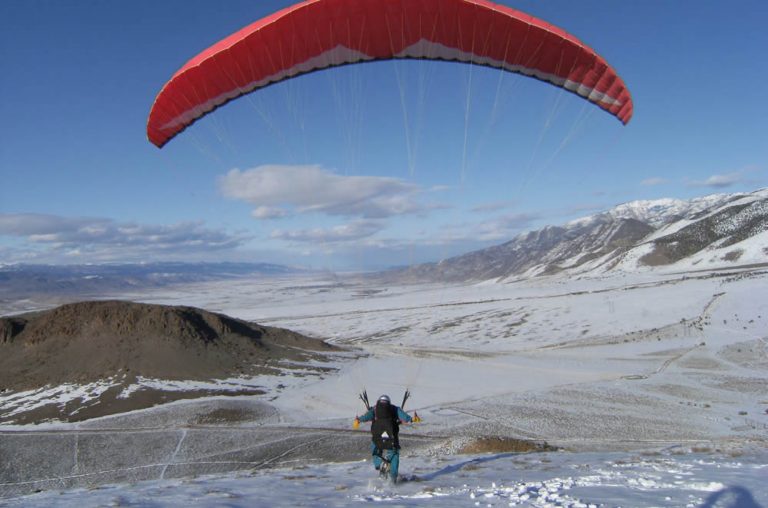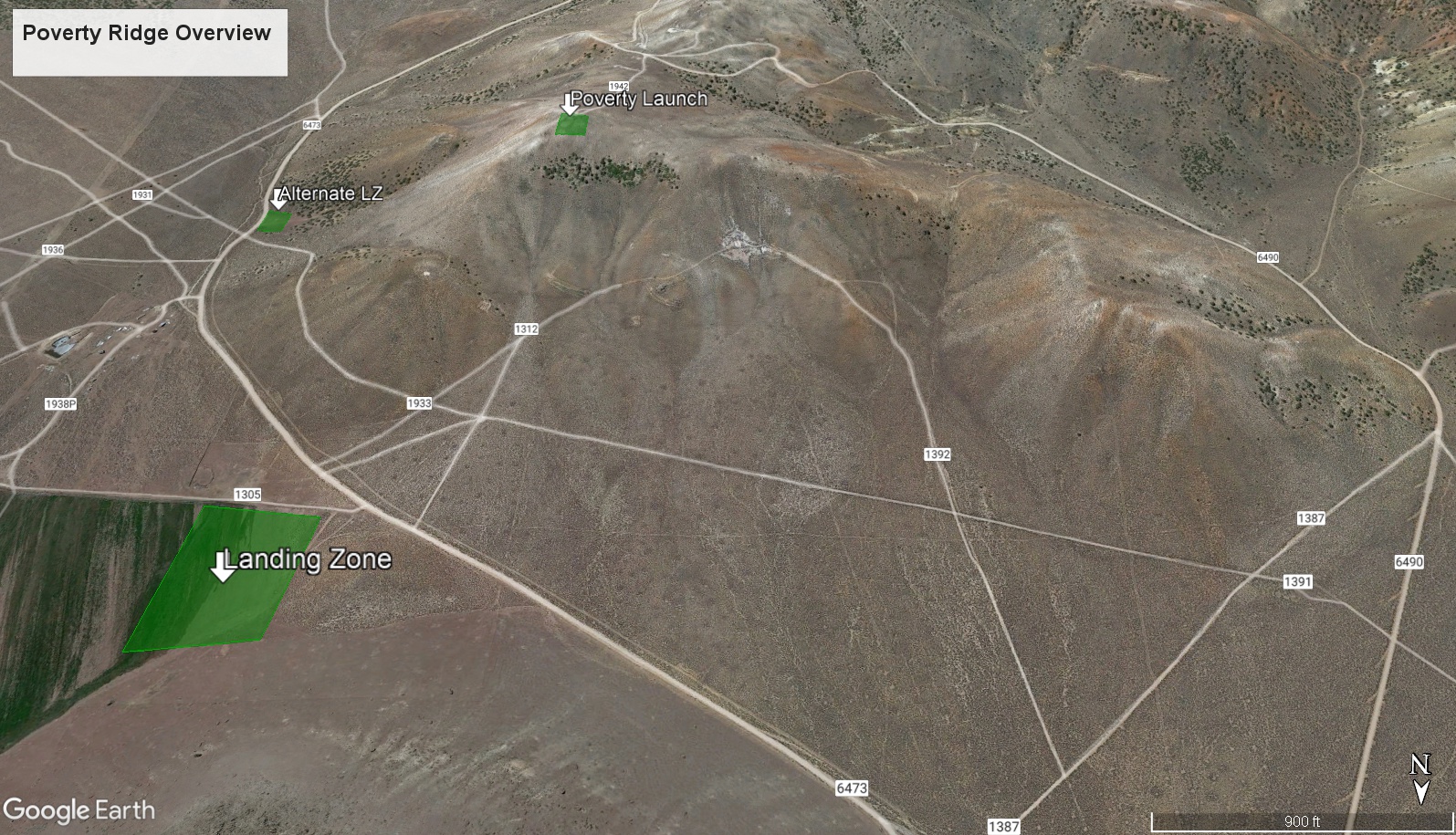
Updated: 12.18.24
Often set up perfectly by the northern valley breeze, Poverty offers a ridge soaring site amongst the abundance of thermal soaring sites in Central Utah. In northern winds, the South end of the valley has a venturi effect that can produce great soaring conditions, but can quickly become too strong to fly.
Beware of soaring in high winds. The obvious hill out front has been known to produce serious rotor. It is also wise to land 15-30 mins before sunset as katabatic flow off Monroe has been known to produce rotor. Also be aware of blow-back in higher winds…launch is located on top of a hill and strong kiting skills may be necessary.
Please note that the area can get extremely turbulent mid-day during the months from March-October. Multiple accidents have happened in the past while pilots were flying in these conditions. The combination of turbulence and low altitude flying can be a recipe for disaster.
Winter months can be great at Poverty allowing for soaring all day with gentle thermals imbedded into ridge lift.
High altitude general flying information can be found HERE.
Quick Info
- General Site Guidelines HERE
- Not recommended to fly during thermic hours from March to October
- High altitude launch at 6900 ft
- H2/P2/M1 rating required
- Skills needed but not limited to high wind launching, high wind kiting, no wind launching, active piloting in turbulence, high altitude launching, high altitude landing, descent techniques, thermalling, and ridge soaring
- Wind Direction: Ideal 330-30, OK 315-45
- Wind Speed: H2 Min 6, Ideal 12, Max 20, gusts to 5 P2 Min 0, Ideal 6, Max 12, gusts to 5 M1 Min 3, Ideal 10, Max 15, gusts to 3
- Min Glide Ratio 2.6
- Membership in USHPA and CUASA. CUASA membership form HERE
Launch
Typically 2WD accessible in dry conditions, but high clearance is necessary. Please park away from the launch area, giving enough clearance that a pilot being blown backwards won’t hit a vehicle.
With a low-clearance vehicle, pilots can drive and park at the LZ and hike the 600 feet up to launch.
Gravel areas with less snag hazards allow space for a couple gliders at a time to lay out. Keep enough space between gliders to allow some high wind kiting and make sure lines are clear before pulling the wing up. The rocks and snags are sharp and have been known to snap lines.
Landing Zone
The main landing zone is a farmer’s field with “No Trespassing” signs, but pilots have permission to land there. Please do a walkthrough before flying. Note the fence lines and possible sprinklers.
An optional LZ can be found at:
38.52575267388416, -112.16809836501974.
